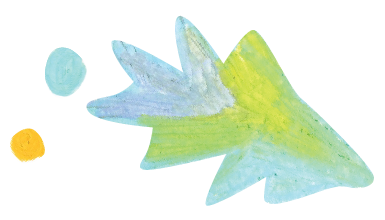Library
-
Heartworm Disease in Dogs
La enfermedad de los gusanos del corazón o dirofilariosis es una enfermedad grave y potencialmente fatal. Está causada por un parásito sanguíneo llamado Dirofilaria immitis.
-
Lyme Disease in Dogs
La enfermedad de Lyme está causada por una espiroqueta, Borrelia burgdorferi. Una espiroqueta es un tipo de bacteria. La enfermedad de Lyme se transmite a los perros a través de la picadura de una garrapata. Una vez en el torrente sanguíneo, el organismo de la enfermedad de Lyme será transportado a diferentes partes del cuerpo y puede llegar a las articulaciones. Antes se pensaba que sólo un tipo concreto de garrapatas podían transmitir la enfermedad, pero ahora parece ser que muchos tipos de especies están implicadas. El tipo más común de garrapata portadora de la enfermedad de Lyme es la garrapata ciervo.
-
Famciclovir is given by mouth and is used off-label to control feline herpesvirus. Give as directed. Side effects may include vomiting, diarrhea, decreased appetite, and increased drinking and urination. Do not use it in pets that are allergic to it or penciclovir. If a negative reaction occurs, call your veterinary office.
-
Feather loss occurs either because the bird is truly losing feathers or because the bird, or its cage-mate, is picking out its feathers. Feather Destructive Behavior (FDB) is a general classification that describes the many types of damage a bird can do to its own feathers, including feather picking. Feather loss and feather-picking can also be caused by diseases that result in irritation or pain for the bird, or damage to, or inappropriate growth of feathers. Feather loss and feather-picking are complicated problems. For specific advice, your bird should have a thorough work-up by a veterinarian familiar with birds.
-
Fechavirus is a type of parvovirus. It is a newly discovered gastrointestinal virus identified in cats in 2018. The significance of fechavirus in pet cats is unknown at this point. The most common signs associated with fechavirus are diarrhea and vomiting. If your veterinarian suspects fechavirus, your cat will receive supportive care to control clinical signs and prevent dehydration.
-
Feline calicivirus is a virus that is an important cause of upper respiratory infections and oral disease in cats. The typical clinical signs of an upper respiratory infection involve the nose and throat such as sneezing, nasal congestion, conjunctivitis, and discharge from the nose or eyes. Calicivirus is highly contagious and infected cats can shed the virus in saliva or secretions from the nose or eyes. The standard core vaccines that are given to cats include immunization against calicivirus and will help reduce the severity of disease and shorten the length of the illness if your cat is exposed.
-
Feline hemotrophic mycoplasmosis (FHM) is caused by a microscopic bacterial parasite that attaches itself to the surface of the cat's red blood cells. The infected blood cells may break down, or they may be treated as “foreign” by the cat's immune system and be destroyed. Anemia occurs if enough red blood cells are infected and destroyed. The test of choice is called a PCR assay. Broad-spectrum antibiotics such as doxycycline, enrofloxacin, or marbofloxacin are used to treat M.Haemofelis infections. Transmission is not fully understood.
-
Feline herpes viral conjunctivitis is a form of primary conjunctivitis caused by the highly infectious feline herpesvirus (FHV-1), which is the most common cause of conjunctivitis in cats. This handout outlines the clinical signs, diagnosis, treatment, and prognosis for affected cats.
-
This handout provides information on Feline Immunodeficiency Virus (FIV) in cats. Included is information on how the disease is transmitted, the clinical signs, the recommendations for isolation of the infected cats, and potential treatment guidelines should your cat be infected with this virus.
-
FIP results from a mutation of Feline Enteric Coronavirus. Many of the clinical signs of FIP are vague and occur with other diseases found in cats. Most cats will develop the wet or effusive form of FIP, which refers to the accumulation of fluid in body cavities. Unfortunately, there are no laboratory tests available that can distinguish between the enteric coronavirus and the FIP-causing strains. Supportive treatments may extend longevity and improve quality of life. New treatments showing success are still under evaluation.

